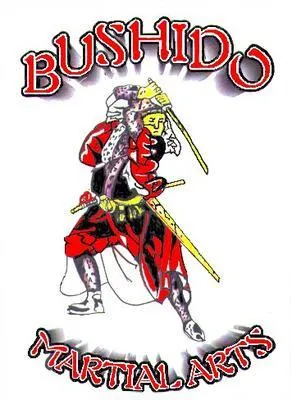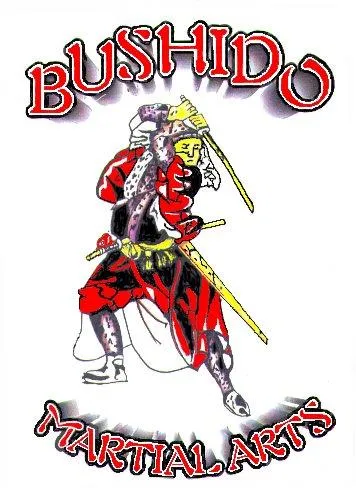
A Deep Dive Into the Martial Art We Proudly Teach at Bushido. What Is Japanese Jiu-Jitsu?
At Bushido Martial Arts, we teach a traditional style of Japanese Jiu-Jitsu, incorporating time-tested techniques such as breakfalls, throws, joint locks, chokes, and real-life strangle escapes.
What sets us apart is our strong addition of Shotokan Karate—a powerful striking art known for its precise punches, structured forms, and dynamic kicking techniques. Together, this blend gives students a well-rounded martial arts system that covers both close-quarters control and effective striking.
Whether you're considering martial arts for self-defence, fitness, or personal growth, understanding the roots of Japanese Jiu-Jitsu—and how we’ve integrated Shotokan to complement it—explains why this system is so practical and relevant today.
The Origins of Japanese Jiu-Jitsu
Jiu-Jitsu (or Jujutsu) traces its roots back to feudal Japan, as far back as the 8th to 12th centuries, during a time when the samurai warrior class dominated the battlefield. These warriors were heavily armoured and often carried swords, spears, and bows. But in the chaos of combat, there were moments when weapons were lost, and close-quarters combat became a matter of life or death.
Jiu-Jitsu was developed as a "soft" or "gentle" art (the word Jū means “gentle” or “flexible”; Jutsu means “art” or “technique”)—designed to defeat an opponent using leverage, redirection, and technique rather than brute strength.
Unlike martial arts that focus on brute force or sport-based grappling, traditional Japanese Jiu-Jitsu teaches students to:
Breakfall safely to reduce injury
Use joint locks, chokes, and throws to control an attacker
Escape real-life strangles and grabs with practical, tested methods
Maintain control with precision, without unnecessary aggression
The Founding Schools and Masters
Over the centuries, many schools (ryu) of Jiu-Jitsu were developed across Japan. Each one passed down its unique interpretation, based on battlefield experience. Notable early systems include:
Takenouchi-Ryu (1532) – One of the earliest formal Jiu-Jitsu schools, blending unarmed techniques with small weapons.
Kito-Ryu – A school focused on throws and principles of balance and energy flow.
Daito-Ryu Aiki-Jujutsu – A system that heavily influenced both Aikido and Brazilian Jiu-Jitsu.
These arts were taught privately and often secretly, with students dedicating years to mastering not just the physical techniques, but the mental discipline and ethical code that underpinned the martial way.
The Role of Shotokan Karate in Our System
To enhance the effectiveness of our traditional Jiu-Jitsu, Bushido students also train in Shotokan Karate—a traditional Japanese striking art known for its strong stances, powerful techniques, and disciplined kata.
By integrating Shotokan into our curriculum, students develop:
Striking and kicking ability to manage threats at range
Improved timing, posture, and movement through kata
Greater coordination, fitness, and awareness
A more complete self-defence skill set, combining striking and control
The Shotokan elements are not taught in isolation—they support and enhance the core Jiu-Jitsu training. This means our students are prepared to defend themselves at all distances, not just in close contact.
More Than Self-Defence – A Code for Life
At Bushido Martial Arts, we don’t just teach students how to punch, block, and throw—we teach the values and traditions that made Jiu-Jitsu a way of life for the samurai.
Central to Japanese Jiu-Jitsu is the Bushido Code, the ethical code of the samurai. This code includes principles like:
Respect – for instructors, training partners, and oneself
Courage – to face challenges, both physical and mental
Honour – to act with integrity, both in and out of the dojo
Self-Control – mastering emotion, action, and reaction
Compassion – strength guided by empathy and responsibility
These values are as important today as they were centuries ago. And they’re at the heart of everything we do at Bushido.
The Modern Relevance of Traditional Jiu-Jitsu (Enhanced with Shotokan)
While Japanese Jiu-Jitsu is rooted in history, its techniques are highly relevant for modern self-defence. At Bushido, our system gives students real-world confidence by combining:
Breakfalls to handle takedowns or unexpected falls
Joint locks and chokes for practical, non-aggressive control
Throws to neutralise a threat quickly and effectively
Strangle and grab escapes drawn from real-life scenarios
Striking and kicking from Shotokan to maintain distance, disrupt attacks, and regain control
This complete, hybrid approach means you’ll be able to respond confidently whether a situation requires restraint, evasion, or force.
Why Learn This Blend at Bushido?
Our instructors at Bushido Martial Arts are highly trained in both traditional Japanese Jiu-Jitsu and Shotokan Karate. We’re passionate about sharing this powerful combination in a way that’s accessible, supportive, and rooted in real-world application.
We create an inclusive, respectful environment where students build:
Practical, adaptable self-defence skills
Physical fitness, flexibility, and confidence
Strong discipline, emotional control, and respect for others
A lifelong appreciation for the martial arts tradition
Whether you’re a complete beginner or returning to training after time away, Bushido Martial Arts offers a welcoming place to learn, grow, and thrive—on and off the mats.
Book a Free Trial Lesson
We invite you to experience the tradition and effectiveness of Japanese Jiu-Jitsu for yourself. Whether it’s for you or your child, we’re confident you’ll come away inspired.
👉 Click here to book your free trial lesson at Bushido Martial Arts

